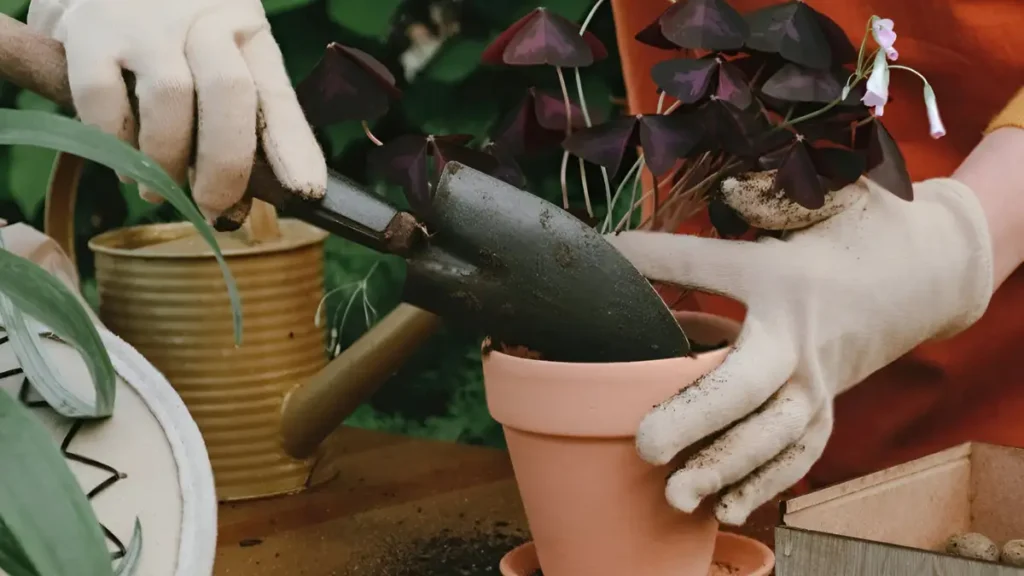The Irish name for “young clover,” shamrock, comes from the word seamróg and has come to represent Ireland. Oxalis spp is the scientific name for it. It originated in Southern Africa, South America, and Central America. Frequently, people purchase flowers to commemorate springtime festivities or to bring good fortune into their interior areas. Due to its lovely blossoms and simplicity of maintenance, this fragile plant is a favorite among those who enjoy houseplants. I’ll cover all you need to know in the following article to cultivate and maintain shamrock plant with ease.
How to grow a shamrock plant:
- Locate a spot for your shamrock planting that receives plenty of indirect light. Although they enjoy sunlight, oxalis might benefit from some shade during the warmest portion of the day. For instance, windows facing south are ideal in the winter but could be excessively warm in the summer.
- Since planting in the spring coincides with their usual flowering season, shamrocks prefer to go dormant in the summer rather than the winter. It usually takes 2-4 weeks for foliage to appear after planting, while flowers may not appear for 8-10 weeks.
- Make sure the potting mix drains well. In case you’re planting bulbs, be sure to excavate holes big enough to accommodate them and arrange them roughly 3.4 inches apart and 1-2 inches deep. Cover with surrounding dirt and push down carefully after the bulbs are in the holes.
- To plant in a container, locate a bright, direct light place in your house and fill the container approximately three-quarters full with well-drained potting mix. Add one to two inches of more dirt on top of the bulbs. Water sparingly—between ½ and 1 cup will usually work until the top growth appears.

Learn how to take care of a shamrock plant:
A lovely and well-liked plant is the shamrock houseplant. It belongs to the family of wood sorrels and is prized for its pretty leaves and little blooms. Both novice and expert gardeners love shamrock plants because they are low maintenance and require little attention.
- To prevent the soil from drying out entirely, water the plant when it seems dry to the touch. The plant’s leaves may droop and wilt if it is not getting enough water. If you observe this, water more often. An alternative would be to provide a water source for the plant by setting a tray of water underneath the pot. Additionally, this will lessen the likelihood of the soil drying out too soon.
- During the growing season, fertilize your shamrock once a month at half intensity with a balanced liquid fertilizer for plants. Feed the plant every two to three months when it is in a dormant state. If you see any evidence of nutritional insufficiency, think about increasing the frequency of fertilization as overfertilization might turn the leaves yellow or brown.
- To promote healthy growth, remove any leaves that are dead or becoming yellow. Shady plants should be replanted every one to two years or when they become root-bound. If needed, use a slightly larger pot and a new potting mix.
- Temperatures between 60 and 70°F are ideal for shamrock growth. An excessively hot or low temperature can stress a plant and make it more prone to illness. If you see any signs of stress in the plant, you may want to consider relocating it to a better area.
- Aphids, spider mites, and whiteflies should be avoided. Stay away from overwatering your plant to keep these pests from attacking it. To get rid of these pests, you can also spray your plant with a solution of dish detergent and water. Typical diseases of shamrock plants include powdery mildew and leaf spot. These illnesses can also be treated with fungicides.
Conclusion:
In conclusion, Bringing some greenery and good fortune into your house, raising and tending a shamrock plant may be a fulfilling endeavor. Your shamrock plant will flourish if you follow these care instructions, giving you years of beauty and perhaps even good fortune.
Certainly! If you’d like to learn more, please consider following our WhatsApp Channel: Harvest Gardening
A frequently asked questions:
Q1. How to propagate shamrock plant?
A1. With a clean knife, trim the roots, then divide them and repot them in a pot with premium potting mix. To assist them in settling into their new surroundings after repotting.
Q2. How long do shamrock plants last?
A2. The plant can grow indoors for an extended period with the right care. After a one to three-month dormant phase in the winter, it blooms intermittently throughout the growing season.
Q3. Why are the leaves of my shamrock plant turning yellow?
A3. Shady plants may turn yellow in the leaves due to overwatering or inadequate drainage. To avoid root rot, make sure the plant has adequate drainage and water it less frequently.
Q4. How to grow a shamrock plant indoors?
A4. A shaded spot is ideal for your shamrock houseplant. During the growth season, fertilize your shamrock plants every two to three weeks and cut back on watering in the winter to promote blossoms.
Q5: What is a Purple Shamrock Plant?
A5: Native to South America, Oxalis triangularis, commonly known as the Purple Shamrock Plant, is a blooming plant. It is distinguished by its exquisite white or pink flowers and unusual purple, triangular leaves.



